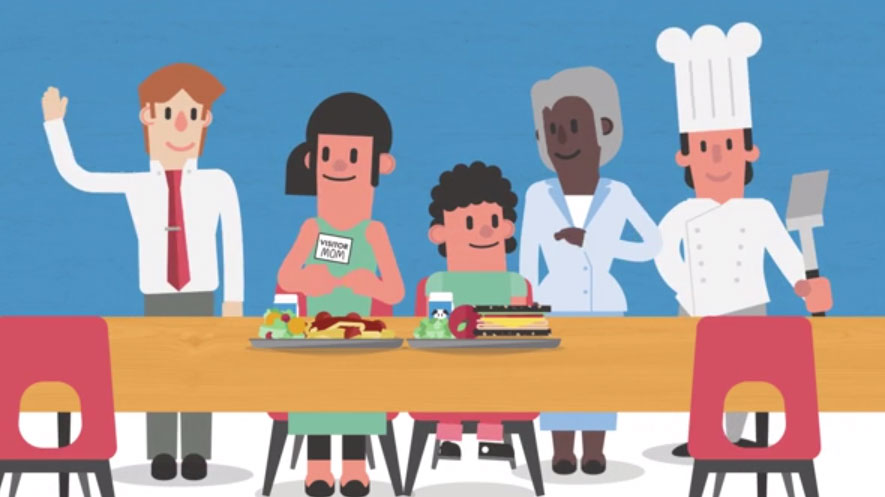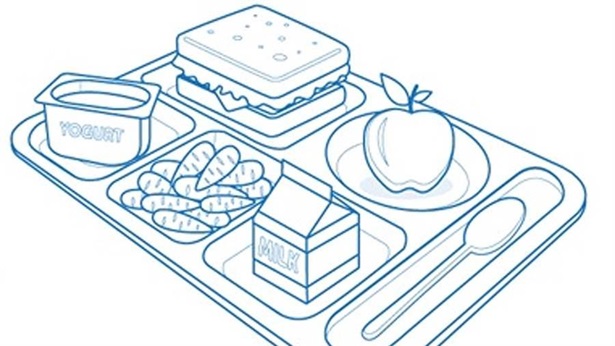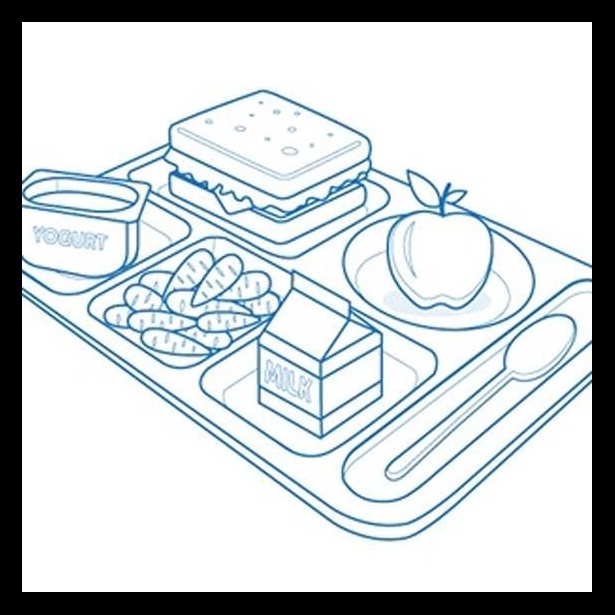How to Support Kids’ Nutrition in Your Child’s School
More than 30 million American children eat school lunches each day. Parents can feel good about this fact because these meals are healthier than ever, which means that kids get the good nutrition they need to learn and do their best in school.
Watch this video to learn how and why school lunches have changed since you were in school.
Make a lunch date
As a parent, you can make a lunch date to eat at your child’s school. Express your support to school staff and students for making nutritious and appetizing meal choices. And talk with the professionals who run your school nutrition programs about their successes and challenges.
Tips for a school lunch date
- Look at the menu ahead of time with your child to help you pick a day for your lunchroom visit.
- While in the lunch line, talk with your child about the healthy choices available and encourage him or her to try something new.
- After your meal, reach out to the school nutrition staff members and share your feedback. Ask about the ways in which they engage families in efforts to improve students’ food.
- Talk about what you have learned with the school principal and ask how she or he is helping the school nutrition program build on successes and overcome challenges.
Ideas for improvements in the lunchroom
Nutrition changes can be challenging for staff and students alike. These resources can provide administrators and parents in your district with solutions to common barriers.
- School Food Success Stories: Learn how other districts have helped students make healthier choices.
- Production, Purchasing, and Promotion Tips: Find ways to help nutrition programs become more efficient and gain financial strength.
- Healthy Recipes for Schools: Browse these meals—configured for cafeteria-size batches—and share with your school recipes that your family likes.
- Design a Smarter Lunchroom: See how small, inexpensive changes can encourage children to try and enjoy more nutritious foods.
Understand the national standards for school meals
Ninety-five percent of public schools participate in the National School Lunch Program and must serve meals that meet the nutrition standards set by the U.S. Department of Agriculture. USDA has recently updated these standards to reflect what is now known about children’s nutritional needs. And for every meal served, the district receives additional funding from the agency that can help improve the meal program. Higher rates of participation are a win-win: Students consume healthy meals, and their schools get additional support.
Work with the PTA
PTAs and similar organizations originally pushed for the creation of the National School Lunch Program, and they continue to support improvements in school meals and snacks. Check out these guides from the National PTA and ask your local parent-teacher-student group to make the success of student nutrition programs a priority.


This video is hosted by YouTube. In order to view it, you must consent to the use of “Marketing Cookies” by updating your preferences in the Cookie Settings link below. View on YouTube
This video is hosted by YouTube. In order to view it, you must consent to the use of “Marketing Cookies” by updating your preferences in the Cookie Settings link below. View on YouTube


Parents Want Healthy School Food
More than 30 million American children eat school lunches each day, and these meals are healthier than ever. See how school lunches have changed.
Watch the Video

America’s Overdose Crisis
Sign up for our five-email course explaining the overdose crisis in America, the state of treatment access, and ways to improve care
Sign up








